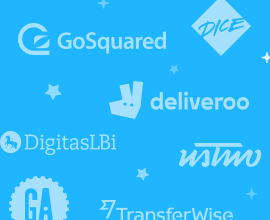At the beginning of last year I had the privilege of leading a team of 14 newly hired, enthused and ambitious designers at IBM Studios Austin. This team was part of a much larger group of 56 Designers and 24 Associate Offering Managers — all starting their journey together as makers, thinkers, and innovators in one of the most significant companies in the world. User-centered design at scale? Check! Donuts and coffee? Check!
I went through this same onboarding experience just 2 years ago when I first joined IBM Design. If you’d like, you can check it out here. ????
In addition to ushering in these new designers, I also participated in a new program: Bootcamp for New Design Leads, that was developed for designers who have become strong leaders in their discipline, on their team, or across the organization. This one-week program exposed the realities of being a leader in a large-scale company — the good, the great, the bad, and the ugly. Panel discussions, keynotes, and workshops addressed topics such as communication strategy, team dynamics, project management, how not to be a jerk, how to deal with jerks, and much more. The goal of all this was to prepare individuals for a career in leadership and elevate the value of design in a space that is traditionally dominated by business and technology. Basically, we were learning how to hustle! ????
"When all else fails, use the Internet — Google will tell you almost everything."
Over the course of both programs and after much observation, discovery, and a whole lot of trial and error, I learned a few things about leadership. I’ve put together some tips and tricks that I hope will guide anyone interested in taking on a leadership role in the future, or for those who have recently found themselves tiptoeing down that path. These are basic lessons, filled with common sense, but they are the ones I found to be most impactful and useful when finding my feet in this new role.
1_Get one step ahead
So, you’re leading a new project but you have minimal domain knowledge. Yeah yeah, this probably sounds familiar for most designers — regardless of what industry you’re in. In order to tackle this hurdle, preparation is key. Spend time reviewing the brief, knowing your stakeholders, understanding your users and the marketplace.
"To direct your team you need to know what direction they should move in."
This is your time to ask all of the questions and lean on subject matter experts. And honestly, when all else fails, use the Internet — Google will tell you almost everything.
2_Be honest, when possible
Your team will look to you for the answers and it’s your responsibility to push them forward. But what happens when you simply don’t have the answer or necessary insight to propel them ahead? Well that’s okay because nobody knows everything (????), especially at first try. Acknowledging that you don’t have the solution upfront will remind everyone that you are human and there to learn, just like everyone else. Figuring things out together with your team will help you gain their trust.
"Figuring things out together with your team will help you gain their trust."
On the flipside, and as controversial as it may seem at first, sometimes it’s best to actually withhold information. In his book “Redesigning Leadership”, John Maeda discusses the difference between transparency and clarity. His observation really resonated with me because while it’s important to be clear in your direction and point of view, it’s not always necessary to disclose every known fact at every given chance.
"Prompt your team with enough insight to get them started — it’s up to them to investigate further."
This is a great way for your team to learn how to work independently. Oh, and it will also help you avoid those awkward political conversations that often distract from the task at hand. You know, the one ones that usually involve words like ‘budget’ or ‘management’.
3_Repeat, repeat, and repeat
Delivering your advice with clarity and simplicity is an important step in successful communication. But when you’re working with a diverse group it’s likely that someone will miss out on that crucial snippet of information you just shared. So repeat those critical points as often as you need to!
“Repetition is useful but make sure to try it in different forms — say it once, write it down, and then draw a diagram.”
4_Talk less, listen more
"Empathy helps us solve problems and develop thoughtful, meaningful solutions."
Empathy is the number one tool in a designer’s kit. Empathy helps us solve problems and develop thoughtful, meaningful solutions. To understand your team, stakeholders, and the marketplace, you must pay attention to the wants, needs, and concerns voiced by everyone involved. One simple way to gain empathy is to listen.
"A good leader will not only appreciate the power of listening, but will instill this value in their team to ensure that everyone’s voice is heard, regardless of who is in the room."
This is especially important when you’re leading a large team of diverse individuals. During one of our workshops someone pointed out that humans are designed to have two ears but just one mouth. Touché! So before making decisions that will influence the direction of the project, just take a step back and listen.
5_Read the room
When a team gets together for the first time in a new environment, it can be challenging, both professionally and personally.
"Remember that no two people are the same, and as a leader it’s important to understand the dynamics and personalities of your team."
Gauge how individuals respond to feedback. Identify the introverts and the extroverts, and try to spot the spontaneous makers from the deep thinkers. Notice how people interact with their team mates, with policy and bureaucracy, and with project deliverables. This will help you understand why things go wrong when they do. If at any time (and yes, there will be a time ????) a dispute arises, you will have enough insight into each member of your team to know how best to deliver feedback and direction appropriately.
6_Let it go
"As a leader you better get comfortable with working from a distance."
As a leader you better get comfortable with working from a distance. Until now, you’ve been doing all the fun, tactical design stuff like sketching wire-frames, testing prototypes, and composing presentation decks. But now your job is to mentor and direct how these things should and could be done.
"It’s time to dig deep and share your expertise, experiences, and knowledge to guide the work of your team without getting your hands dirty, so to speak."
As hard as it may be, try to resist the urge to move that pixel or change that line of code unless it’s your direct responsibility to do so, and it often will be. Although you’re still actively involved in crafting the output, you also need to focus on the strategic evolution of the project. Work with your team to delegate and share the workload. Trusting in others will help you find that balance.
7_Trust in failure
At the end of the day, you’re in a leadership position because you have a certain kind of expertise that will help grow the team and develop great products or services for your organization. When you assume your first lead position, no matter how big or small it is, you will want to do the best you can. You will want to keep everyone happy, including yourself. Inevitably, you will feel the pressure that comes with this responsibility. You’ll have a team looking to you for direction and you’ll have a client or executive looking for outcomes…oy vey! All that said...
"you (and your teammates) are allowed to fail every now and then, so you should be prepared to let it happen."
After all, without failure there would never be any progress ????.

Designers from America, China and Europe learning how to lead & hustle at IBM.
Being a leader does not mean you have to have all the answers, or even the right answers. Being a good leader means being self-aware, humble, empathetic and fearless. Embracing these qualities will help you navigate conflict, delegate tasks and empower your team. At the same time, you can ensure the growth of your own creative skill set which is just as important.
"Being a good leader means being self-aware, humble, empathetic and fearless."
When leading a team or an individual in your industry remember to stay human and intentional. Be deliberate in your actions and pay close attention to your project deliverables and business needs. But always be mindful of your team and yourself. Clear, open communication and authenticity will result in great things — whether it’s new friendships, new learning, or a groundbreaking innovation, the outcome will be a win. If you hustle with passion and lead with intent then your team will design with purpose. Even if your intent is to ‘just try’…
This post was originally published on Lara's Medium profile.


